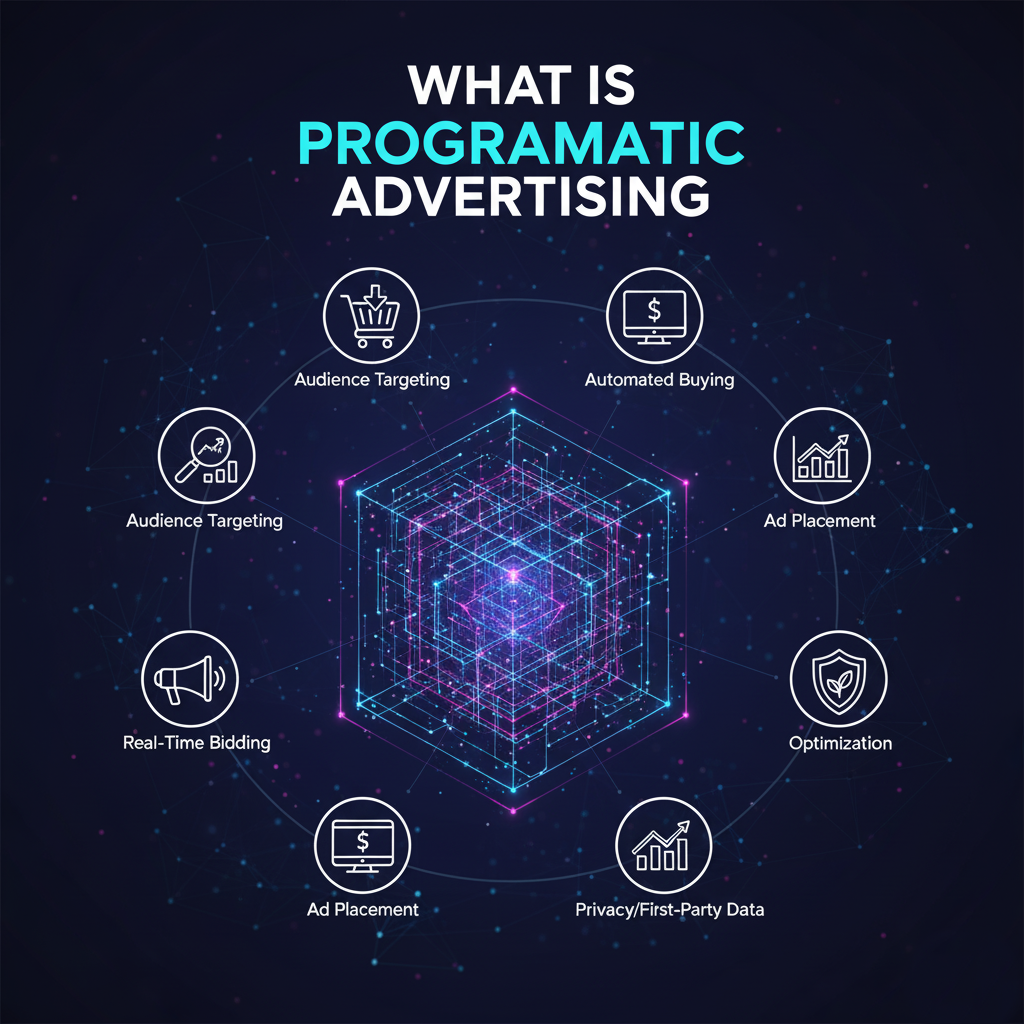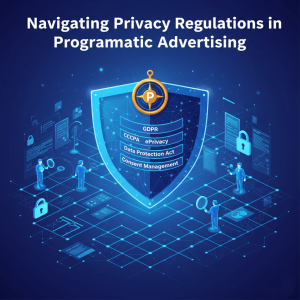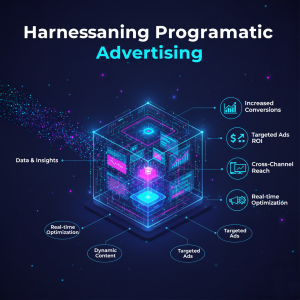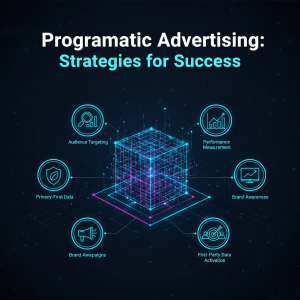Navigating Privacy Regulations in Programmatic Advertising: Balancing Compliance and Performance

In today’s data-driven marketing landscape, programmatic advertising has unlocked unprecedented opportunities for precision targeting and scale. However, the rise of stringent privacy regulations around the world presents fresh challenges. Marketers must now strike a delicate balance between compliance with laws like GDPR and CCPA and maintaining the performance gains that programmatic channels deliver. This comprehensive guide explores how to navigate evolving privacy requirements, implement best practices, and leverage technology to optimize both data privacy and campaign effectiveness.
What Is Programmatic Advertising?

Programmatic advertising automates the buying and selling of digital ad inventory through real-time auctions, powered by demand-side platforms (DSPs) and supply-side platforms (SSPs). By leveraging algorithms, machine learning, and rich data sets, marketers can deliver personalized messages to the right audience at the optimal time. The result is improved return on ad spend (ROAS), enhanced efficiency, and the ability to scale campaigns across a variety of channels including display, video, mobile, and connected TV.
Why Privacy Regulations Matter
As advertisers collect, process, and activate consumer data, regulators have responded to growing privacy concerns by enacting laws designed to protect personal information. Non-compliance can lead to hefty fines, reputational damage, and loss of consumer trust. Moreover, browsers and operating systems are phasing out third-party cookies and limiting tracking methods, making it essential for marketers to adopt privacy-centric strategies in programmatic campaigns while still delivering personalized experiences.
Key Privacy Regulations Impacting Programmatic Advertising
Several landmark laws shape the way data can be used in programmatic advertising globally. The General Data Protection Regulation (GDPR) governs the processing of personal data in the European Economic Area. The California Consumer Privacy Act (CCPA) and its successor the California Privacy Rights Act (CPRA) regulate data collection and consumer rights in California. Other regions are following suit with laws such as Brazil’s LGPD and Canada’s PIPEDA. Staying abreast of these regulations and their enforcement nuances is critical for multinational campaigns.
GDPR: A Global Benchmark
Enforced since May 2018, GDPR sets a high bar for data protection. It requires lawful processing of personal data, meaningful consent, data minimization, and enables individuals to access or erase their data. For programmatic advertisers, GDPR compliance means ensuring consent management platforms (CMPs) are in place, avoiding unauthorized data brokers, and maintaining transparent data usage policies throughout the ad supply chain.
CCPA/CPRA: U.S. Data Privacy in Action
California’s CCPA and CPRA grant residents the right to know what personal data is collected, to opt out of its sale, and to request deletion. These laws extend to any business targeting California consumers, including through programmatic channels. Advertisers must provide clear opt-out mechanisms and must not penalize users who exercise their rights, making consent signals critical inputs for DSP targeting filters.
Emerging Regulations Worldwide
Beyond GDPR and CCPA, countries like Brazil (LGPD), India (draft PDP Bill), and multiple U.S. states are enacting or considering privacy laws. Each introduces its own consent requirements and definitions of personal data. A centralized compliance framework that can adapt to local regulations helps global advertisers manage risk and maintain consistent user experiences across markets.
The Impact of Privacy on Programmatic Targeting
Restricted access to third-party cookies and tightened user consent reduces the amount of deterministic behavioral data available for precise audience segmentation. This can lead to higher customer acquisition costs and potentially lower conversion rates if not addressed proactively. Advertisers are now exploring alternative solutions such as contextual targeting, publisher first-party data partnerships, and identity resolution ecosystems to maintain performance while respecting privacy boundaries.
Embracing Contextual and Semantic Targeting
Contextual advertising relies on page content rather than user history, making it inherently privacy-friendly. Advanced semantic algorithms analyze keywords, topics, sentiment, and brand safety parameters to align ads with relevant content. By combining contextual insights with broad audience data, advertisers can deliver tailored messages without infringing on personal data rights, often yielding comparable or even higher engagement rates than traditional cookie-based approaches.
Leveraging First-Party Data and Clean Rooms

First-party data collected directly from customers—such as website interactions, CRM records, and subscription lists—remains the gold standard for compliance and precision. Data clean rooms enable secure, privacy-compliant collaboration between advertisers, publishers, and platforms by allowing aggregated, anonymized data analysis without exposing raw personal identifiers. This fosters richer audience insights and performance measurement while adhering to regulatory constraints.
Consent Management Platforms (CMPs)
CMPs play a central role in capturing, storing, and conveying user consent signals across the ad ecosystem. By integrating with DSPs, SSPs, and analytics tools, CMPs ensure that only authorized data is processed for targeting or measurement. Advertisers should choose CMPs that support granular consent options, provide audit trails for compliance, and update as regulations evolve to avoid legal pitfalls.
Best Practices for Privacy-First Programmatic Campaigns
- Conduct a data audit: Map all data sources, flows, and third-party connections to identify compliance gaps.
- Prioritize transparency: Clearly communicate data practices in privacy policies and consent prompts.
- Implement layered consent: Offer users meaningful choices for different data uses (e.g., analytics, personalization, advertising).
- Adopt cookieless solutions: Invest in contextual, cohort-based, or identity resolution alternatives.
- Monitor performance metrics: Track both privacy compliance KPIs (opt-in rates) and traditional ad metrics (CTR, CPA) to optimize holistically.
- Stay agile: Update strategies and vendor contracts as new regulations or browser policies emerge.
Cross-Border Considerations
Running programmatic campaigns across multiple jurisdictions requires a nuanced understanding of local privacy laws, data transfer restrictions, and consent obligations. Multinational advertisers should deploy geo-fencing for data collection, host user data in compliant regions, and leverage vendor solutions that automatically enforce regional rules to mitigate legal risk.
Technology Solutions for Privacy Compliance
Innovations in privacy-enhancing technologies (PETs) such as differential privacy, federated learning, and encrypted analytics are reshaping how advertisers measure and optimize campaigns. By integrating these tools with programmatic platforms, marketers can glean actionable audience insights without direct access to personally identifiable information, fostering trust and long-term consumer relationships.
Collaboration Across the Ecosystem
Effective privacy compliance in programmatic advertising demands collaboration between marketers, legal teams, technology vendors, and publishers. Establish clear data governance policies, define shared responsibilities in vendor agreements, and participate in industry initiatives such as the IAB’s Privacy Framework to align on standards and drive collective progress.
Measuring Success: Balancing Privacy and Performance
Key performance indicators should reflect both campaign effectiveness and compliance health. Monitor metrics such as consent rates, data opt-outs, ad viewability, conversions, and return on ad spend (ROAS) in tandem. Regularly audit data flows and generate compliance reports to demonstrate accountability, while using A/B tests to compare privacy-first tactics against traditional methods for ongoing optimization.
Looking Ahead: The Future of Privacy in Programmatic Advertising
Privacy regulations and consumer expectations will continue to evolve, pushing the industry toward more transparent, equitable, and privacy-preserving advertising models. Advances in AI, PETs, and standardized identity solutions will further enable advertisers to deliver personalized experiences without compromising data rights. Brands that embrace a proactive, privacy-first mindset will gain competitive advantage and build lasting customer trust.
Conclusion
Navigating the complex web of privacy regulations in programmatic advertising requires a strategic blend of compliance, innovation, and adaptability. By prioritizing consent management, investing in alternative targeting methods, and fostering collaboration across the ecosystem, marketers can maintain high-performing campaigns while respecting consumer data rights. Embracing a privacy-first approach not only mitigates legal risk but also strengthens brand reputation and paves the way for sustainable growth in an increasingly privacy-conscious world.





